14 Spectacular Sights in Sofia
Sofia, the capital of Bulgaria, is situated in the west of the country, close to the border with Serbia. It is a very grey city in the sense that there are a lot of concrete communist-style buildings interspersed with grander concrete buildings, but there are still plenty of sights in Sofia. Bulgaria’s socialist past is evident in its architecture, particularly throughout Sofia. The city feels very different to any other Balkan city that we had visited (including cities within Bulgaria), but this uniqueness is what makes it so intriguing. The closest resemblance, I’d say would be Bucharest in Romania.
Huge, imposing buildings line the paths while Soviet-style trams yoyo up and down the main streets. Street art attempts to brighten up the sea of grey, as do the colourful rooftops of churches studding the skyline. You could easily spend a couple of days exploring the city and eating at the vast array of superb restaurants. And honestly, the vegetarian options we found throughout the city were great! So much so, I have a full blog post just on the restaurants coming soon! Watch this space.
Find all our recommendations on the top sights in Sofia in this city guide.
Disclaimer: This blog post may contain affiliate links. If you click and purchase through an affiliate link, we may earn a small commission at no extra cost to you! This just helps us to continue creating blog posts. We will only ever recommend products and services that we have tried and loved ourselves.
A Brief History of Sofia
Earliest settlement of Sofia dates back some 7000 years, making it one of Europe’s oldest cities. Known during Roman times as Serdika, Sofia was controlled by several empires – notably Byzantine, Ottoman, Bulgarian – before becoming a socialist republic after WW2. During this period, many buildings were constructed and these have shaped the look and feel of the city you see today. Bulgaria gained independence in 1989.
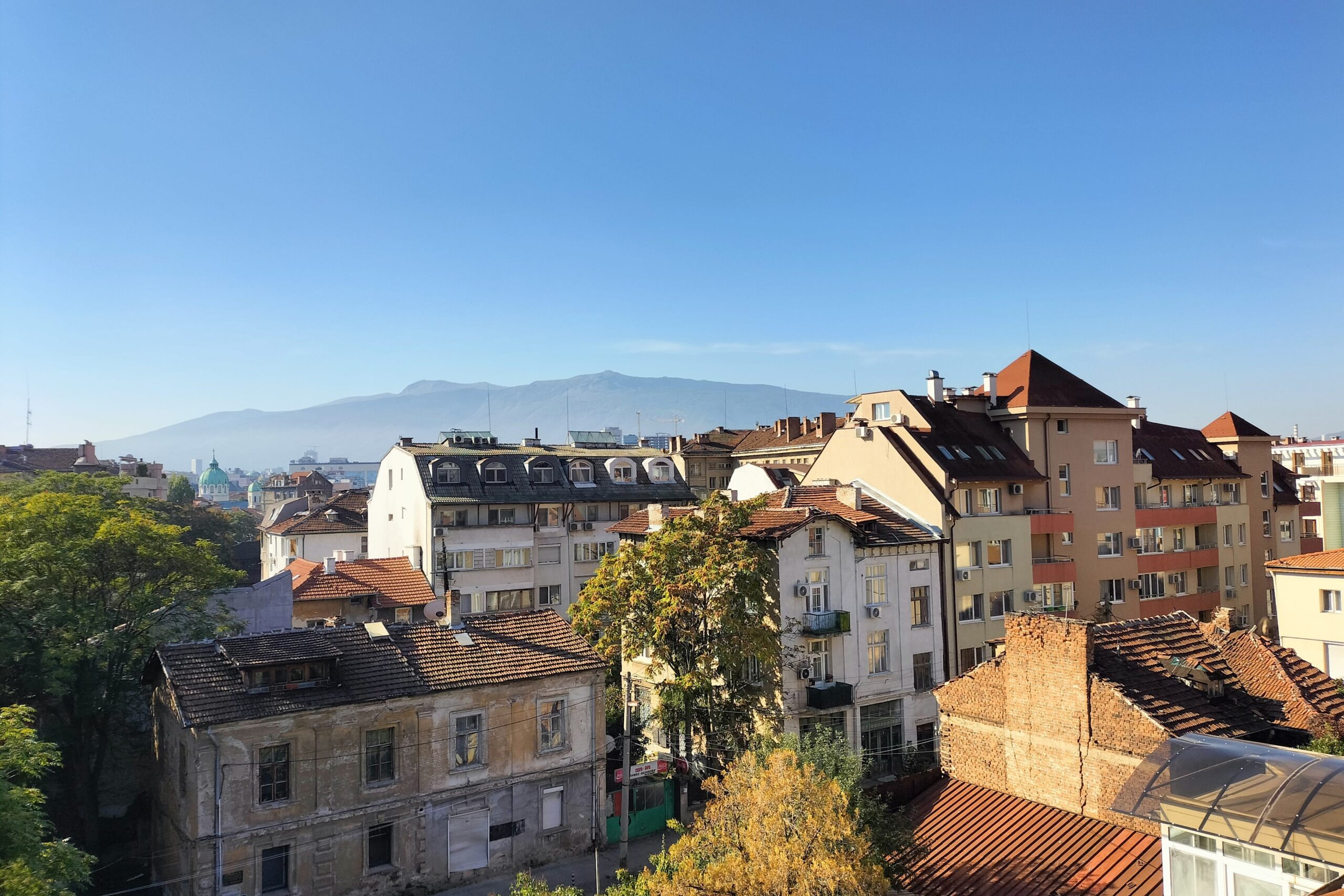
Sofia skyline
How to Get to Sofia
Sofia Airport (SOF) is about a twenty/thirty minute bus ride out of the city. It is an international airport connecting Bulgaria to the rest of Europe and some of the Middle East.
Buses and trains connect cities throughout the country and to neighbouring countries. The buses/trains that we have used to and from Sofia are below:
Skopje to Sofia bus: cost £22 and took five hours, leaving Skopje at 15:00
Sofia to Bucharest bus: cost £16 and took nine hours (there was traffic at the border), leaving Sofia at 13:15.
Read our full blog post on this bus journey and tips for navigating Sofia bus station here.
Bucharest to Sofia bus: cost £14 and took five and a half hours, leaving Bucharest at 23:30
Sofia to Bansko bus: cost 29 BGN and took three hours, leaving Sofia at 11:30
Bansko to Sofia bus: cost 20 BGN and took three hours, leaving Bansko at 12:51
Sofia to Plovdiv bus: cost 14 BGN and took about two hours, leaving Sofia at 12:10
Plovdiv to Sofia train: cost 8.3 BGN and took about three hours, leaving Plovdiv at 11:20
Sofia to Veliko Tarnovo bus: cost 22 BGN and took three hours, leaving at 11:00
(We spent a lot of time in Sofia!)
Planning Your Trip?
These are our favourite resources that we use religiously for planning our travels at home and while on the road. Use them for your trip planning too!
Accommodation: for the best deals, we use Booking.com, and Agoda.com. And what’s even better is that you build up loyalty points the more you book, which gets you exclusive offers like extra discounts, free breakfast, free room upgrades, and cashback!
Transport: For buses and trains, we swear by BusBud, and 12Go Asia.
For flights, we find them on Skyscanner and make sure to book through Trip.com because you can rack up points which turn into credit on your account, and sometimes free lounge access.
Travel Insurance: THE best budget-friendly insurance SafetyWing – no question.
SIM Cards/Tickets/Experience: Klook is the way to go!
Where to Stay in Sofia
Finding accommodation in Sofia is tough. We had visitors come out to see us so were able to book apartments which meant that the prices were shared 3 or 4 ways. Also, if you take a look on booking.com, you’ll see that the customer reviews are generally very poor. We stayed for two nights in Favorit Hotel, which has nice and clean rooms, and it has better reviews than most places you’ll see for the same money.
Sights in Sofia
Alexander Nevsky Cathedral
Alexander Nevsky Cathedral should be at the top of everyone’s Sofia itinerary. It is the iconic picture of Sofia, and with good reason. It is a huge and stunning cathedral with gold and green domes, and with very dark, yet intricate artwork on the interior. The cathedral is an homage to the Russians who fought for Bulgaria to gain independence from the Ottomans.

The giantic Alexander Nevsky Cathedral
Join the Free Walking Tour
Association 365’s, free walking tour goes really in-depth to the history and politics of Sofia and Bulgaria. They will take you around the city showing you all the highlights, and then provide you with a booklet of top tips. Hold on to this! It has some great info on day trips and discounts and recommendations on restaurants.
They also run other paid tours, such as the Communist Walking Tour. The period of communism in Bulgaria is a controversial topic that is rarely discussed. You will find little/no information in museums, so we decided to join the tour and learn all about it. The tour costs 25 BGN.
Step Back in to the Communist Period at the Red Flat
Another way to learn about communism in Sofia is to head to the Red Flat. A typical flat has been decorated and laid out as if it would have been during communism. Grab a headset and walk around the flat to learn how people lived during this time. Entrance costs 18 BGN which includes the headset.
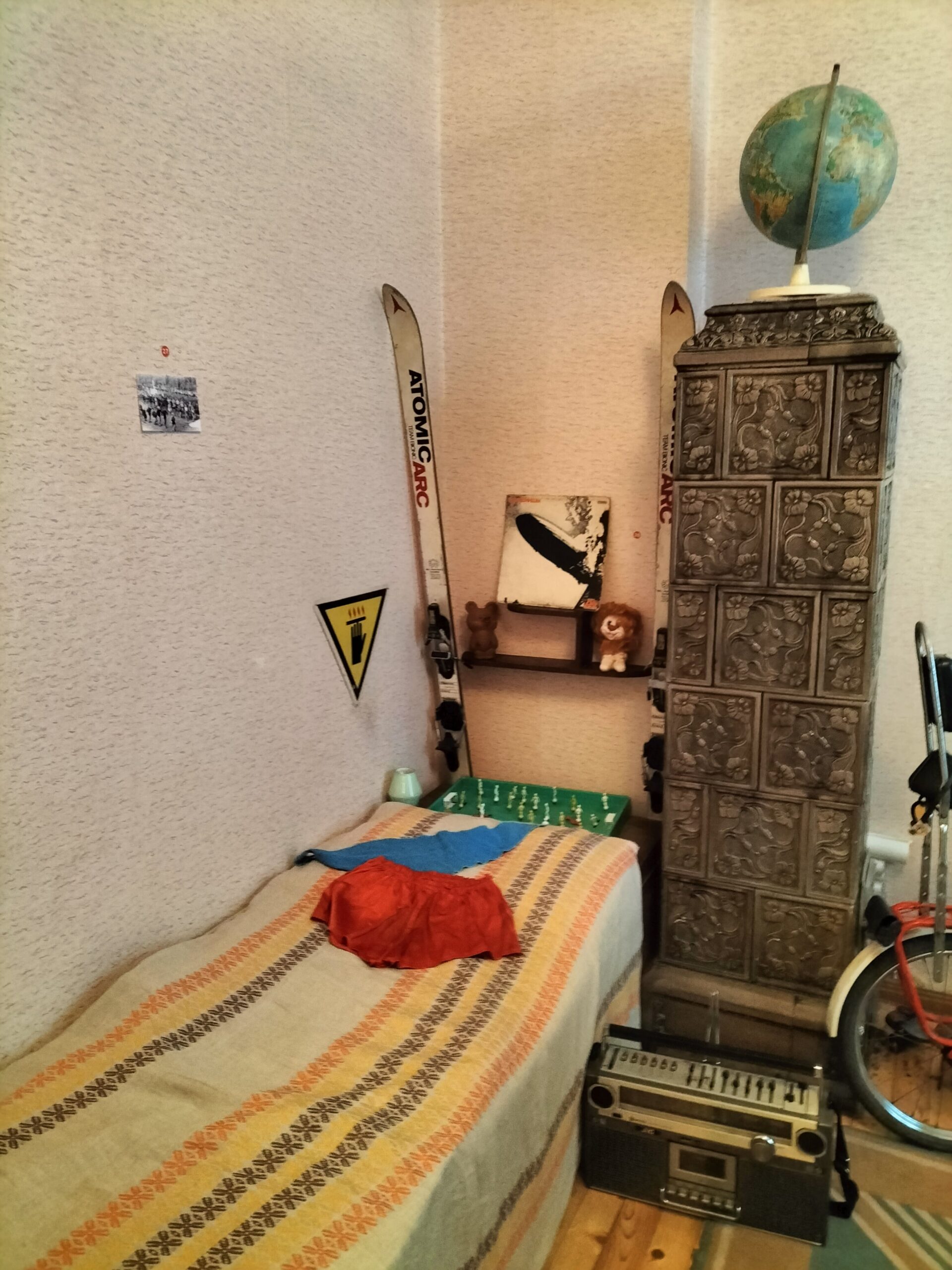
The Red Flat setup
Sveta Nedelya Eastern Orthodox Church
This almost felt like a smaller version of Alexander Nevsky, but with brighter painting inside. This beautiful church was the site of an attempted assassination of the then King by the communist party. He was fortunately running late to the service at the church, and so was unharmed. Hundreds of others, however, were injured and many were killed.

Sveta Nedelya Church
Haven't bought your travel insurance yet?
Definitely buy travel insurance for all of your trips abroad. We have used SafetyWing for the last two years of backpacking, and we 100% recommend it, whether you are travelling for a couple of weeks, months, or years. And it is the most budget friendly, best value option out there!
Purchase your SafetyWing Travel Insurance here.
St. George Rotunda Church
This is understood to be the oldest building in Sofia, built in the 4th century. During communism, the church was surrounded on all sides by concrete block buildings in the hopes to hide the religious monument. To reach it, turn left out of the entrance of Sveta Nedelya Church and walk straight until you see an opening in between the buildings to your left.

Historic St. George Church surrounded by blocks of flats
Regional History Museum
We didn’t actually go inside the museum but just admired the architecture from the outside. This has to be my favourite building in Sofia because of all of its detailed paintwork and arched entrance way. The building used to be a functioning mineral bath before it was turned in to a museum.
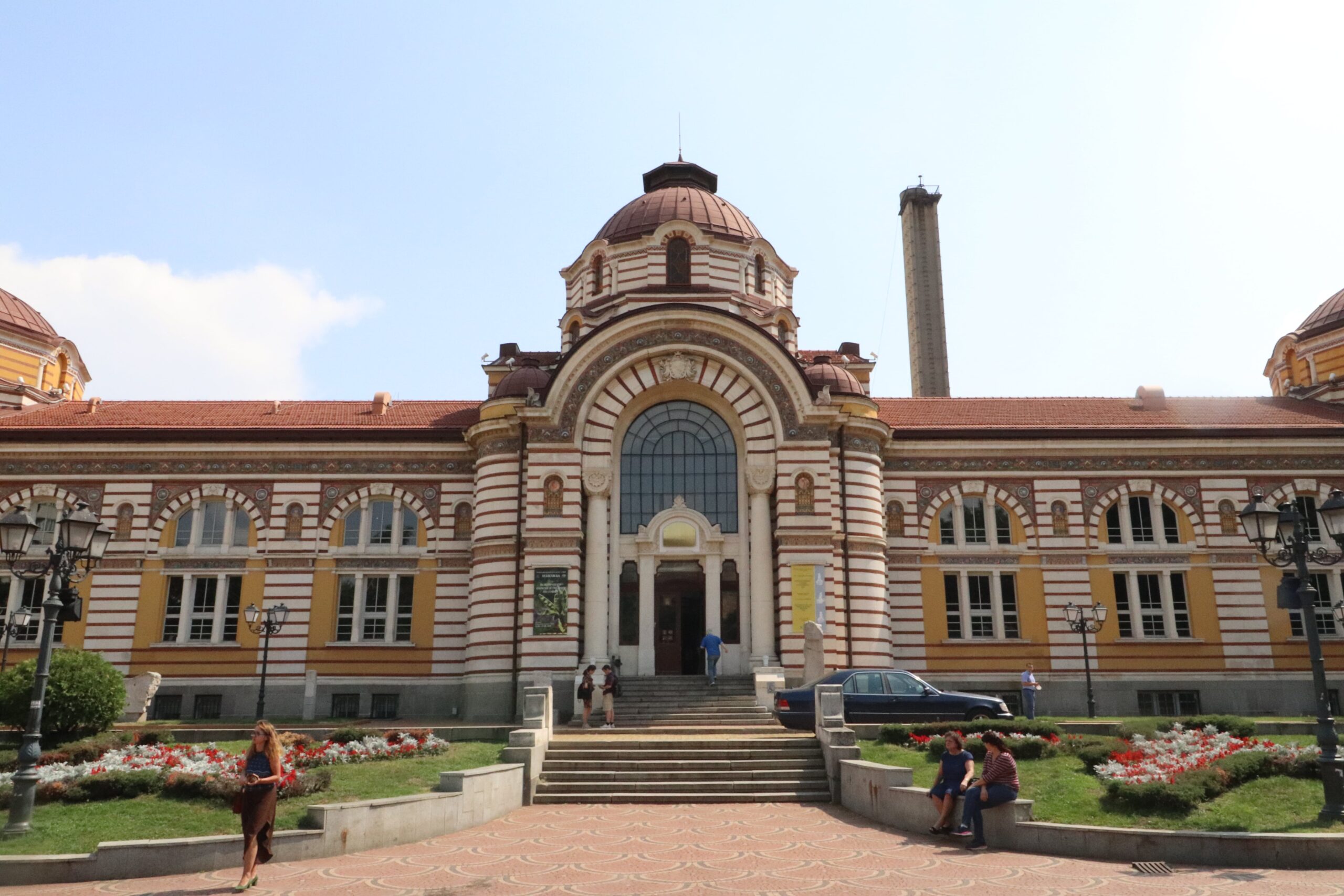
The architectural beauty of the History Museum
Church of St. Nicholas the Miracle Maker
This is a small Russian church with gold domes, green roof tiles and tall spires, made in a similar style (yet more understated) to those in St. Petersburg and Moscow.

Church of St. Nicholas the Miracler Maker
Saint Sofia Monument
This is a controversial one amongst Sofia residents. The city of Sofia is named after St. Sofia Church, near Alexander Nevsky Cathedral. However, the city planners decided that a monument of a scantily clad woman be hoisted up high to look over the city and to be named ‘Saint Sofia’.
Women’s Market
The Women’s Market is where you can find loads of fresh produce as well as souvenirs and coffee shops. Our friend, Nasia, runs a shop selling great coffee for great prices. Find her here at Dream Story.
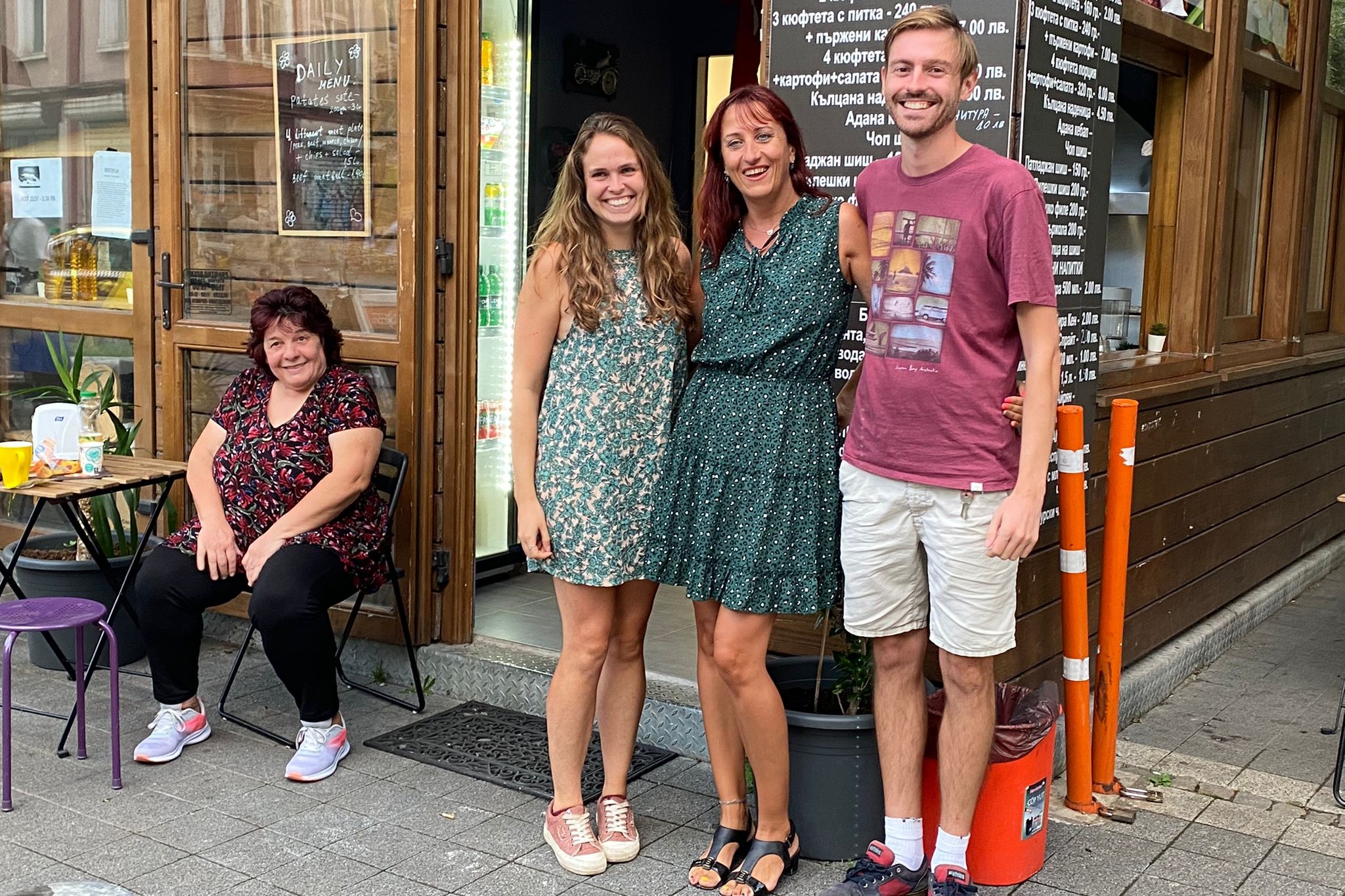
Saying goodbye to Nasia after our long stint in Sofia
National Palace of Culture
Wander over to NDK, as the building is also known. There is a huge park with water fountains where people congregate to chat, walk their dogs, skateboard etc. Now used as an exhibition centre, the National Palace of Culture is a communist era building that is particularly striking with its contrasting black and white panels.
Ivan Vazov National Theatre
This is an extravagant building with pillars and sculptures in neoclassical style. It is a stunning piece of architecture still used as a functioning theatre.
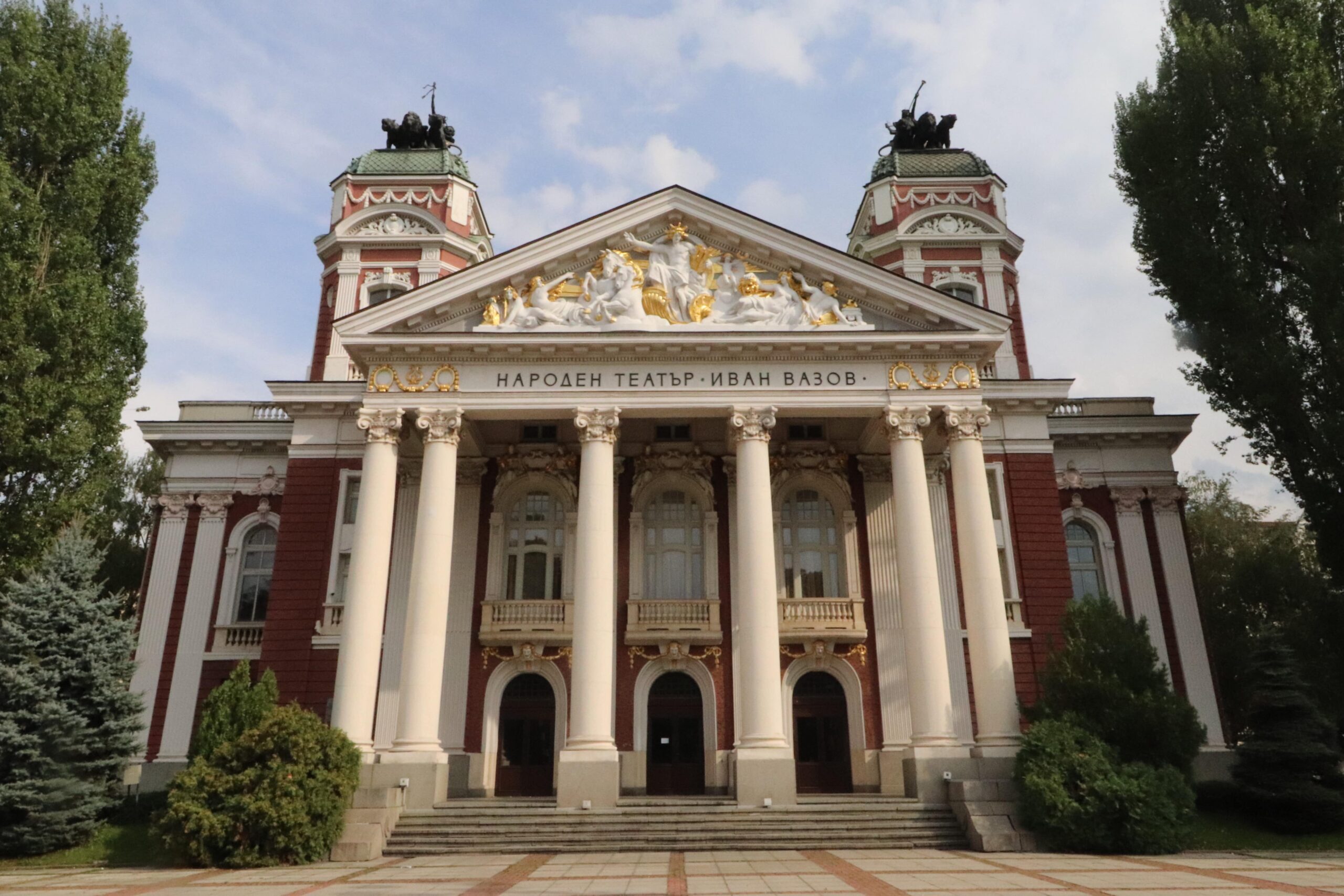
Ivan Vazov Theatre
See the Ruins of Serdika in the Metro Station
When construction of Sofia’s metro station was being carried out, the ruins of Serdika were discovered. Serdika was the name, from back in Roman times, of the settlement where Sofia is today. The ruins are displayed in and around Serdika metro station.
Street Art
You will find street art all over the city, murals covering the whole side of buildings, electrical boxes. Keep an eye out while you’re wandering the city and you are sure to stumble across plenty of great pieces.
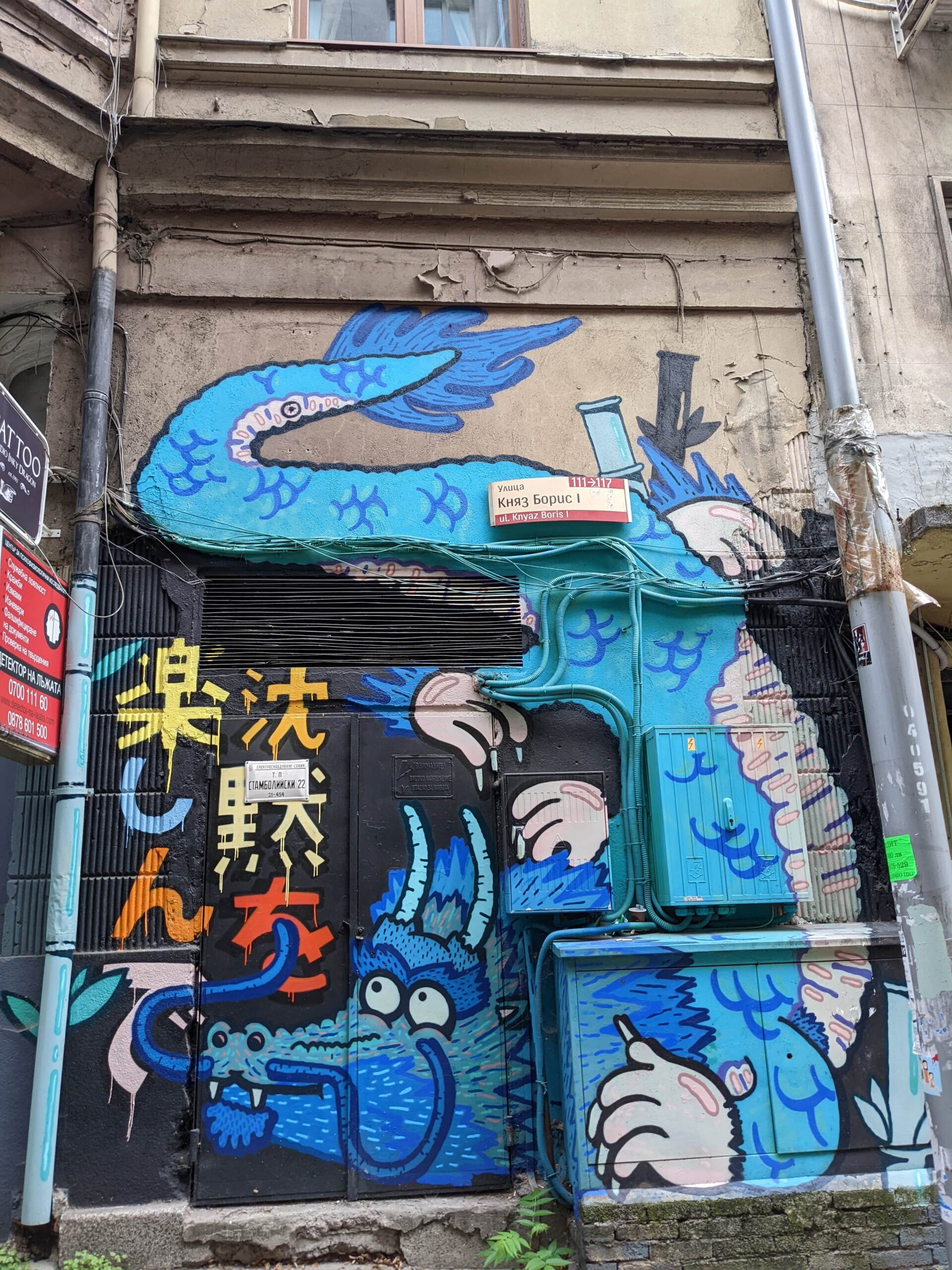
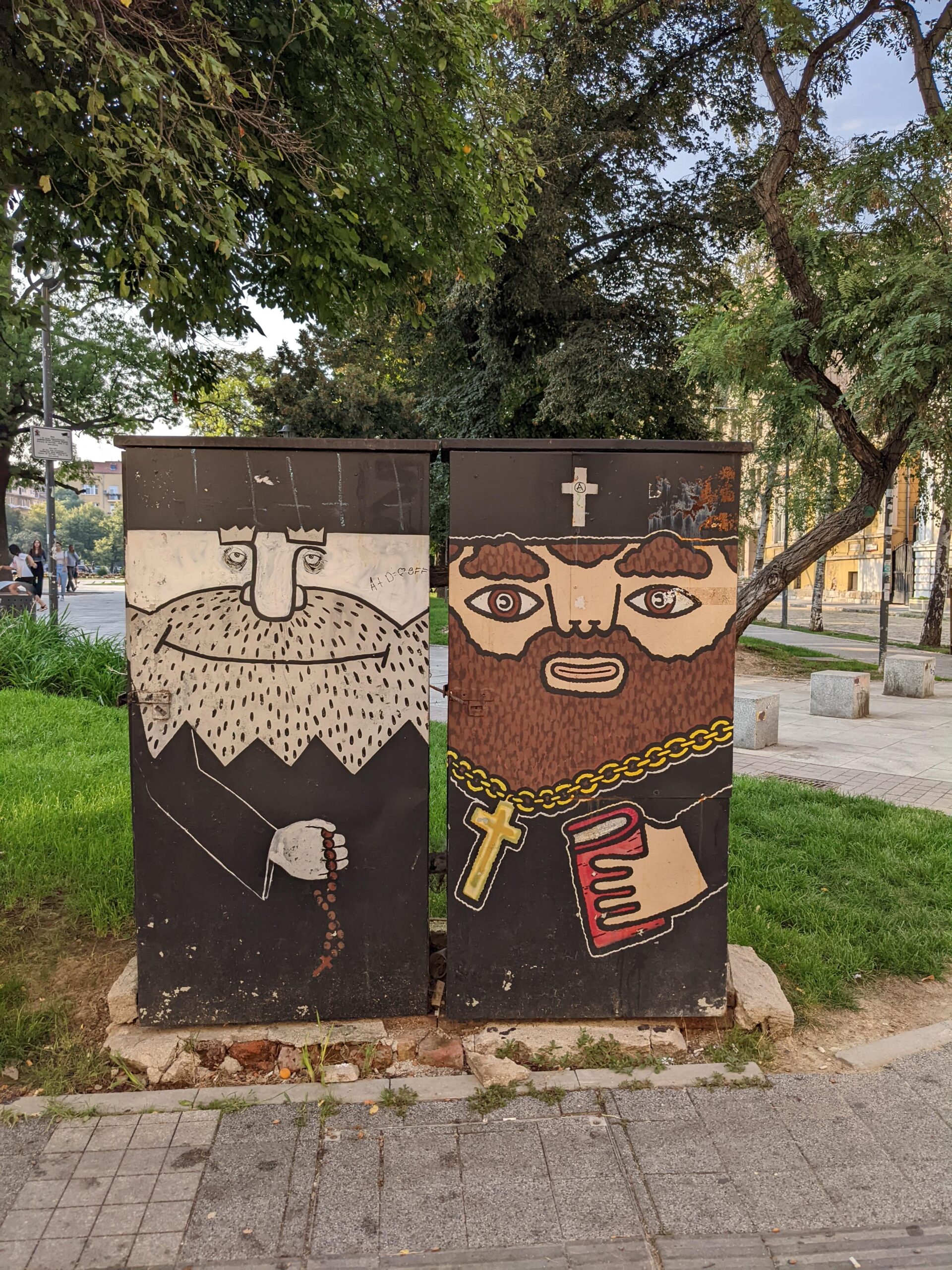
Guards Protecting the Bulgarian Flag
From St George Rotunda Church, you will be able to see the flag behind the glass walls of the building, being protected by guards. Around the front of the building will also be two guards. If you get here at the right time, you might even be able to see the changing of the guards ceremony.
Have you been to Sofia? Are there any other sights in Sofia that I’ve missed?
I’d love to hear your thoughts, recommendations or questions.
Thanks for reading!
Like it? Save it!

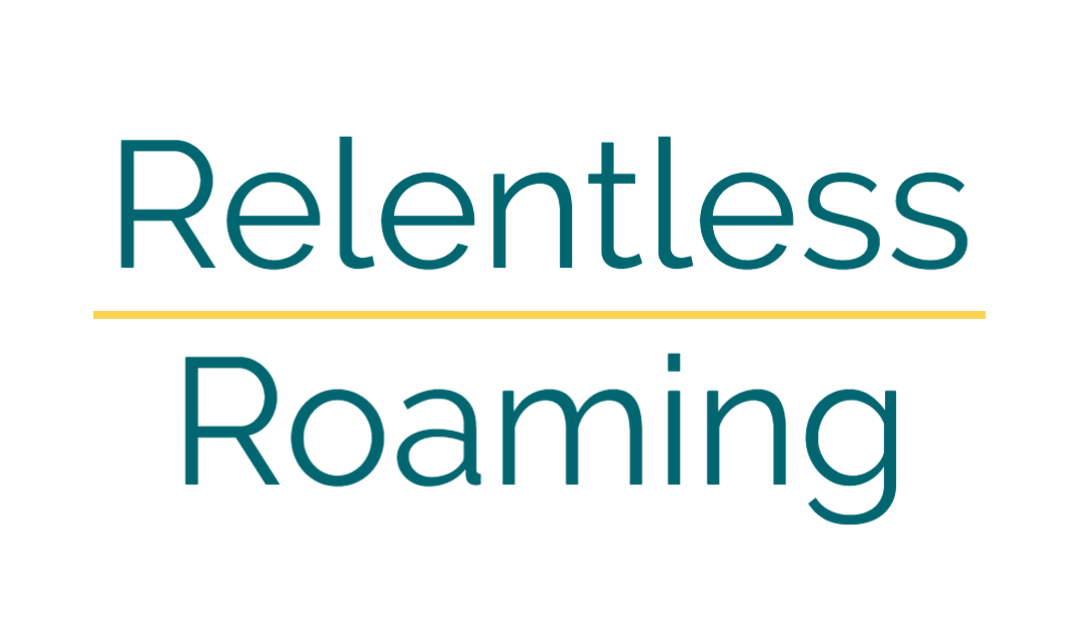

0 Comments